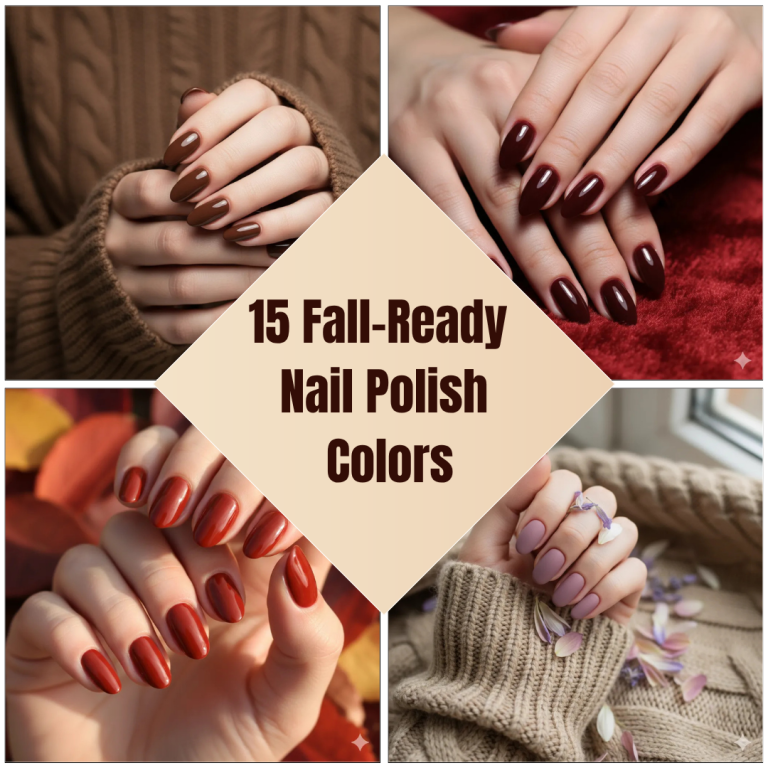Top 15 Awesome Scandinavian Living Room Ideas for a Calm and Bright Space
A calm and bright Scandinavian Living Room Ideas is something many of us dream about, especially when life feels busy and loud. Scandinavian design is loved around the world because it gives us exactly that: light, simple, cozy spaces that feel fresh and peaceful at the same time. The Scandinavian living room is not about showing off; it’s about comfort, warmth, and good use of space. Think white walls, soft textiles, natural wood, and lots of light. In this guide, you’ll find 15 awesome Scandinavian living room ideas that are easy to follow, even if you live in a small apartment or have a tight budget.
What Is Scandinavian Style and Why Is It So Popular?
Scandinavian Living Room Ideas style comes from countries like Sweden, Norway, and Denmark, where winters are long and dark. People there need homes that feel bright and warm even when it’s cold outside. That’s why this style focuses on light colors, simple furniture, and cozy details. Over time, the look has become popular across the world because it works in many types of homes. It makes small spaces feel bigger and big rooms feel more peaceful. The main ideas are simplicity, function, and comfort. Nothing is too fancy or complicated, but everything feels carefully chosen.
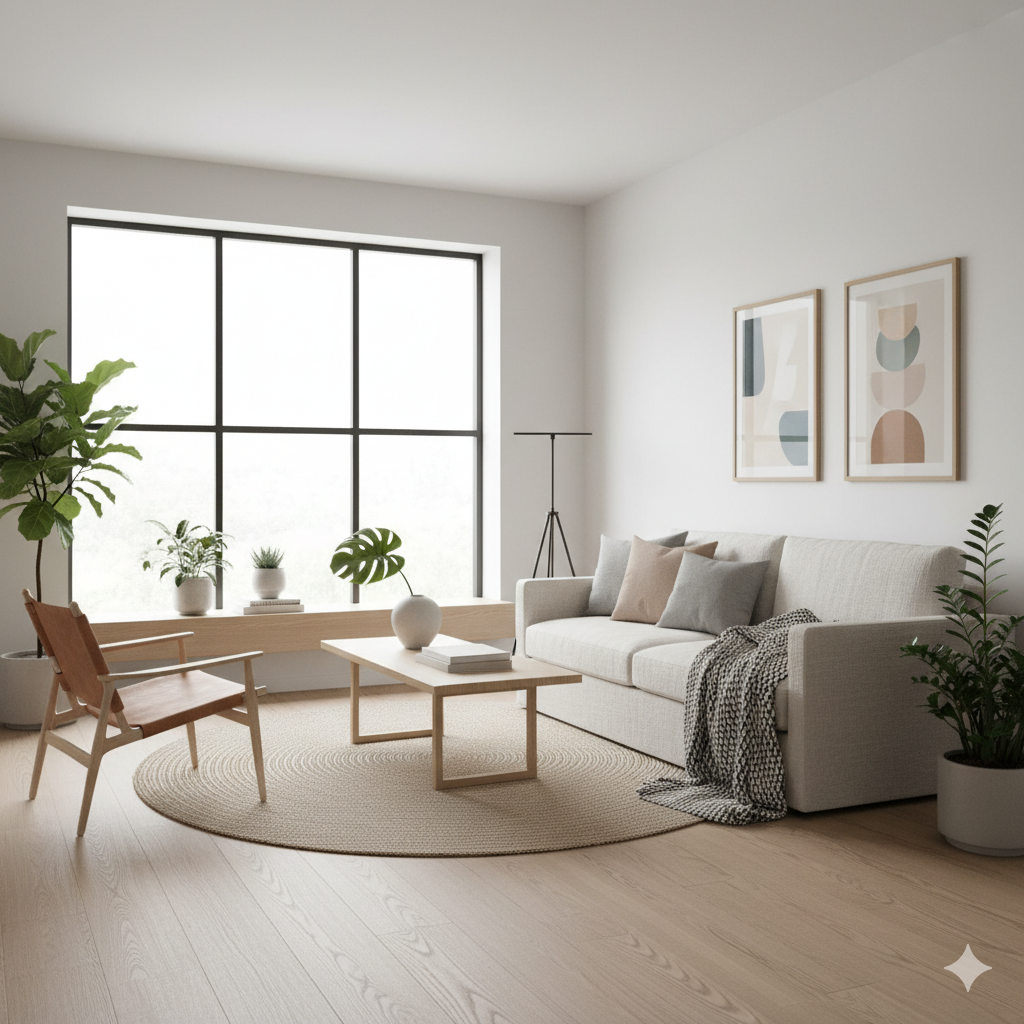
Key Elements of a Calm and Bright Scandinavian Living Room
A Scandinavian Living Room Ideas is not just about buying certain furniture; it’s about how everything works together. The space usually has a neutral base, lots of natural light, and practical pieces that are still beautiful. There are no heavy curtains, dark walls, or too many decorations. Instead, the room is kept open and breathable, so your eyes and mind can rest. Texture plays a big role too: soft rugs, woven baskets, knitted blankets, and natural wood all work together to create warmth. The idea is to make a living room you really use, not just look at. So every choice—from sofa color to lamp design—is made with comfort and calm in mind.
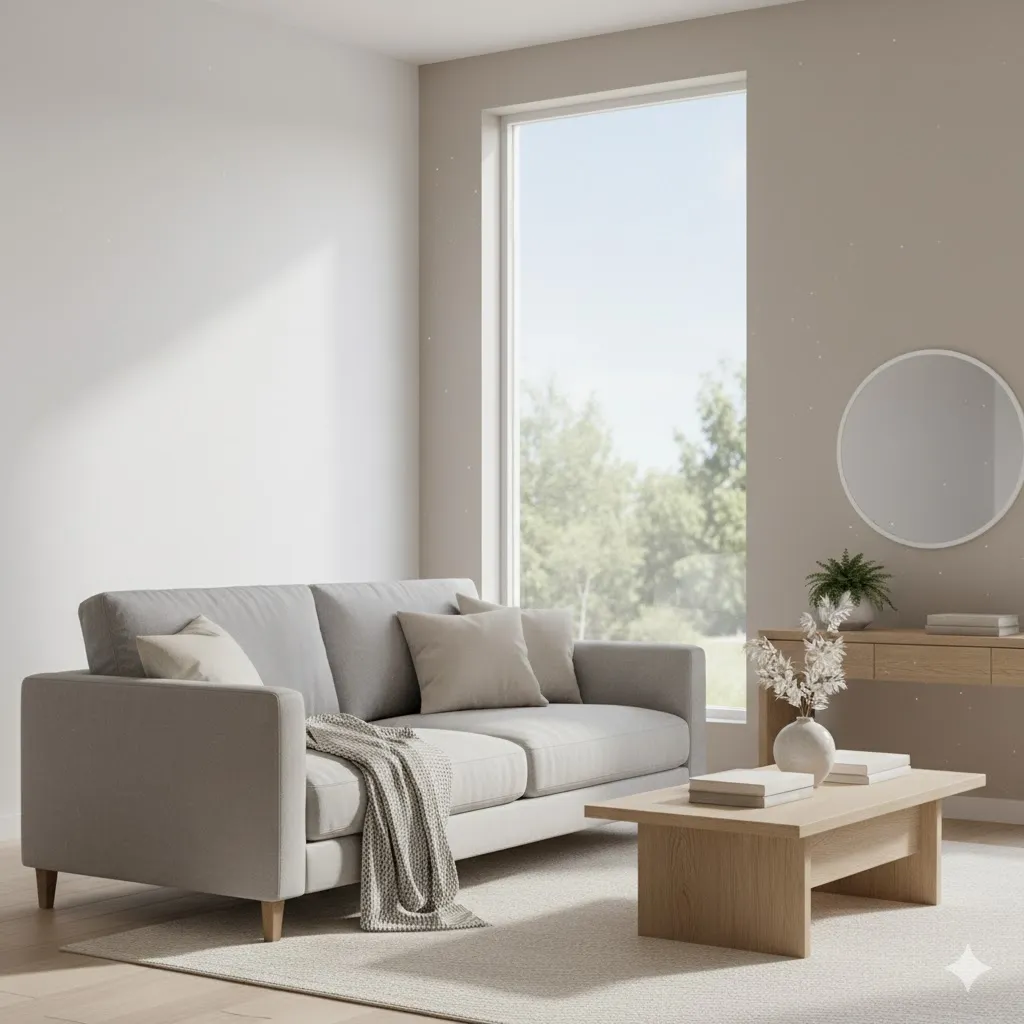
Simple Lines and Clean Shapes
Scandinavian Living Room Ideas furniture is known for its simple lines and clean shapes. Sofas, chairs, and tables usually have straight or gently curved lines without a lot of ornament or heavy carving. This doesn’t mean the furniture is boring; it just means it doesn’t shout for attention. The clean shapes help the room feel calm and uncluttered. When you keep the overall lines simple, your eye can move easily through the space, which creates a sense of peace. You can still add personality with soft textiles, art, and decor, but the main pieces stay timeless and easy on the eye. This also makes it simpler to change your style slightly later without needing to replace everything.
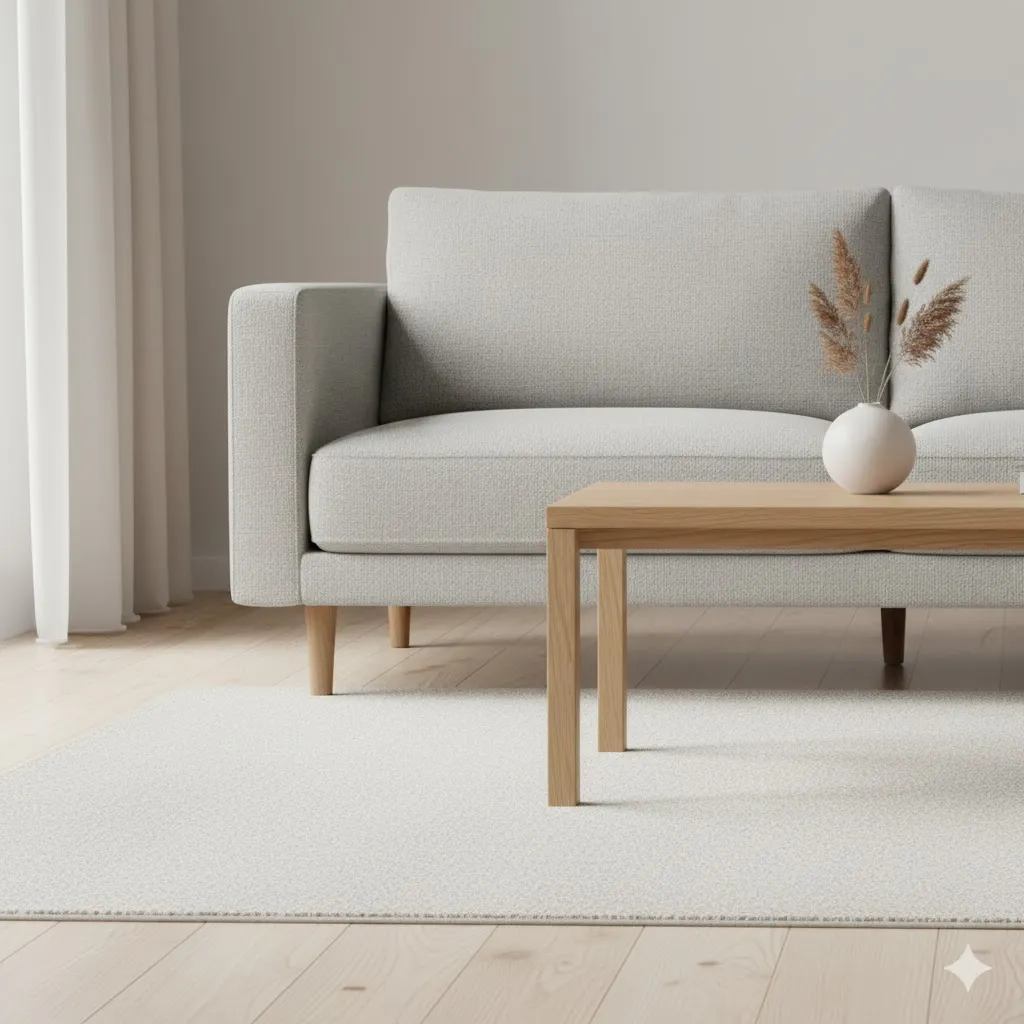
Idea 1 – Go for a Soft Neutral Color Palette
A soft neutral color palette is the foundation of most Scandinavian Living Room Ideas. Start with white or off-white walls if you can; they instantly make the space feel brighter. Then, layer in shades of beige, light grey, and warm cream through your sofa, rug, and curtains. You can add small touches of muted colors like pale blue, soft green, or dusty pink, but keep them gentle. Neutrals don’t mean dull; they mean calm. They give you a lot of freedom to play with different textures and shapes without the room feeling chaotic.
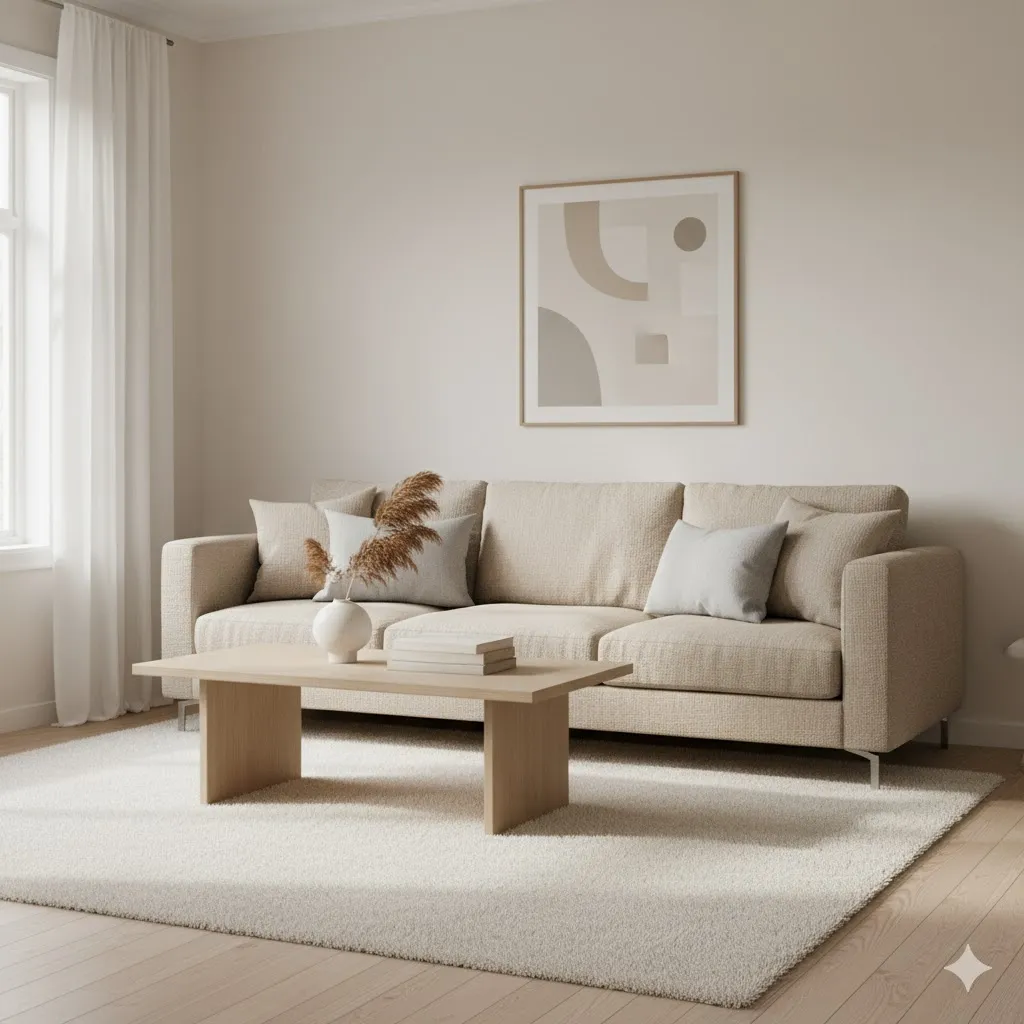
Idea 2 – Let Natural Light Be the Star
In Scandinavian Living Room Ideas, natural light is treated almost like a piece of furniture—it’s that important. If your living room has windows, make the most of them. Use light, thin curtains that let daylight through, or even skip curtains completely if privacy allows. Avoid heavy drapes or dark blinds that block light. Keep window sills simple and uncluttered so the light can spread. You can also use mirrors to reflect light around the room; placing a mirror opposite a window is a classic trick to make the space feel brighter. The goal is to allow sunlight to wash the walls and floor, making your living room feel open, fresh, and alive.

Idea 3 – Choose a Simple, Comfortable Sofa
The sofa is usually the biggest piece in the living room, so it sets the tone for the whole space. For a Scandinavian look, choose a simple, comfortable sofa in a neutral color like light grey, beige, or off-white. Look for clean lines, slim legs, and a design that doesn’t look too bulky. Wooden or simple metal legs that lift the sofa slightly off the floor help the room feel less heavy. Comfort is key, so make sure it’s soft enough to relax on, but not so deep that it takes over the room. Once you have a simple base sofa, you can dress it up with cushions and throws.
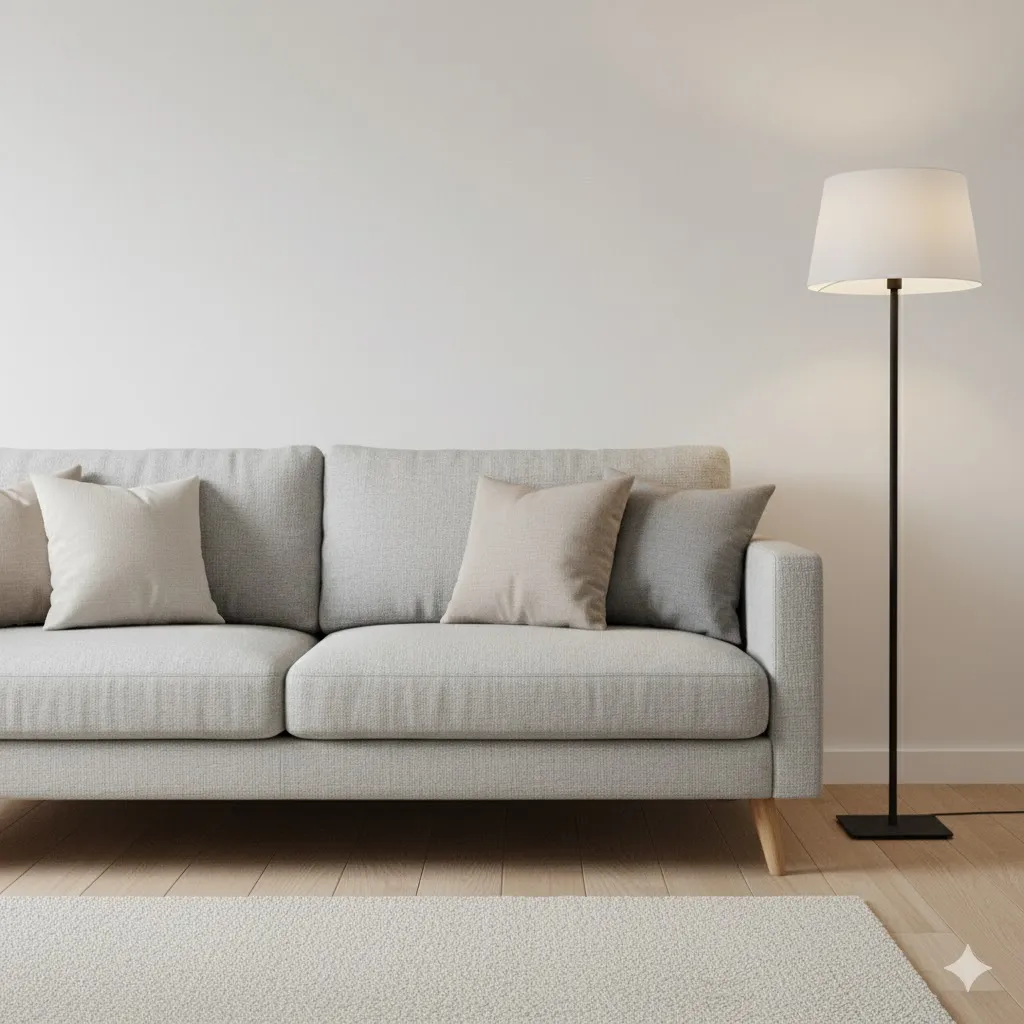
Idea 4 – Layer Textures With Rugs, Throws, and Cushions
Scandinavian design may use simple shapes, but it never feels flat, and that’s because of texture. A calm living room becomes cozy when you layer different materials. Start with a rug—something soft and simple, maybe in wool or cotton, with a light or patterned weave. Then add throws on the sofa, such as knitted blankets, faux fur, or soft cotton throws. Cushions in linen, velvet, or wool bring even more texture and comfort. Try to mix smooth and rough surfaces, thick and thin fabrics. You don’t need bold prints; small patterns and different textures are enough to make the room feel “alive.” Texture also helps a neutral room feel warm instead of empty.
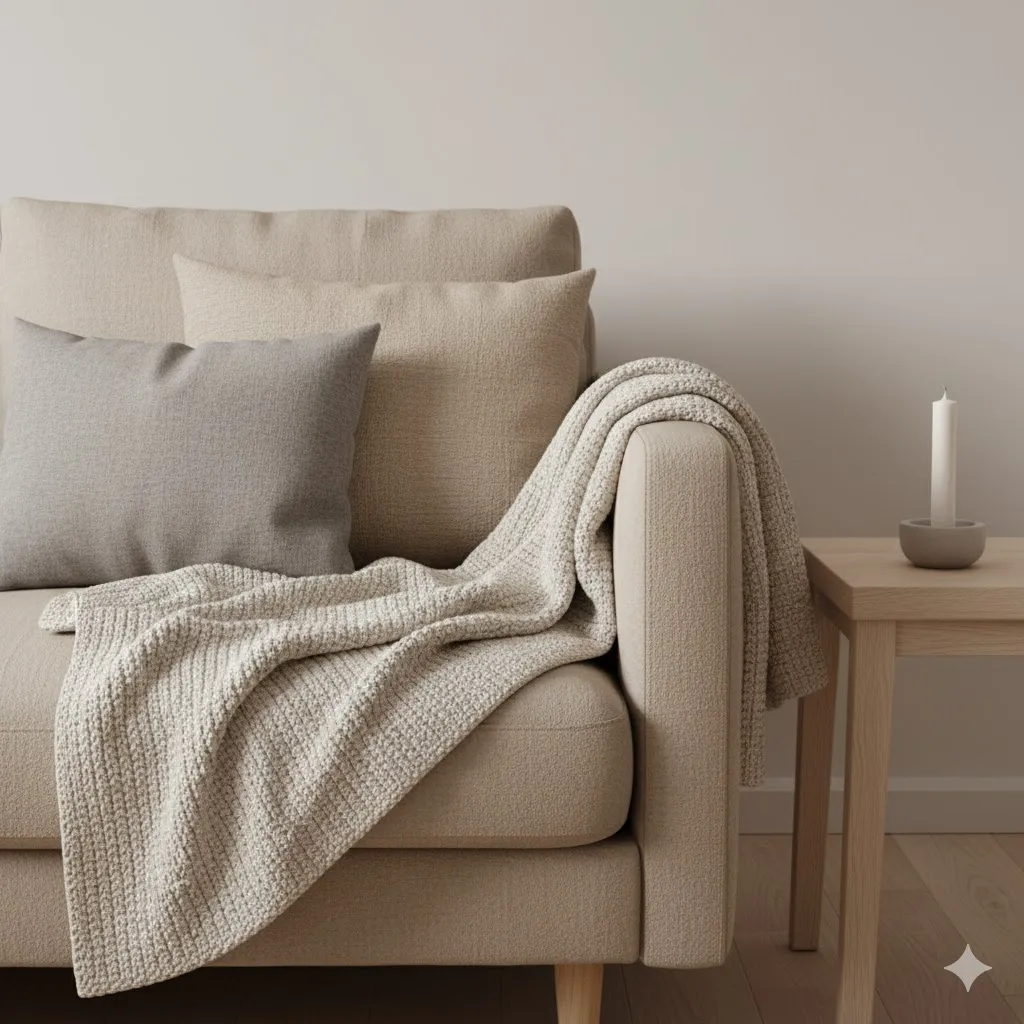
Idea 5 – Add Warm Wood for a Cozy Feel
Wood is a big part of Scandinavian style because it brings nature indoors and adds warmth to light spaces. You’ll often see light woods like oak, ash, birch, or pine in furniture, floors, and decor. A wooden coffee table, side table, or TV stand can soften the look of white walls and grey sofas. Exposed wooden floors, if you have them, are perfect; if not, wood-effect floors or even wooden details like shelves, frames, and stools still make a difference. The key is to keep the wood tones fairly light and natural, not dark and glossy.
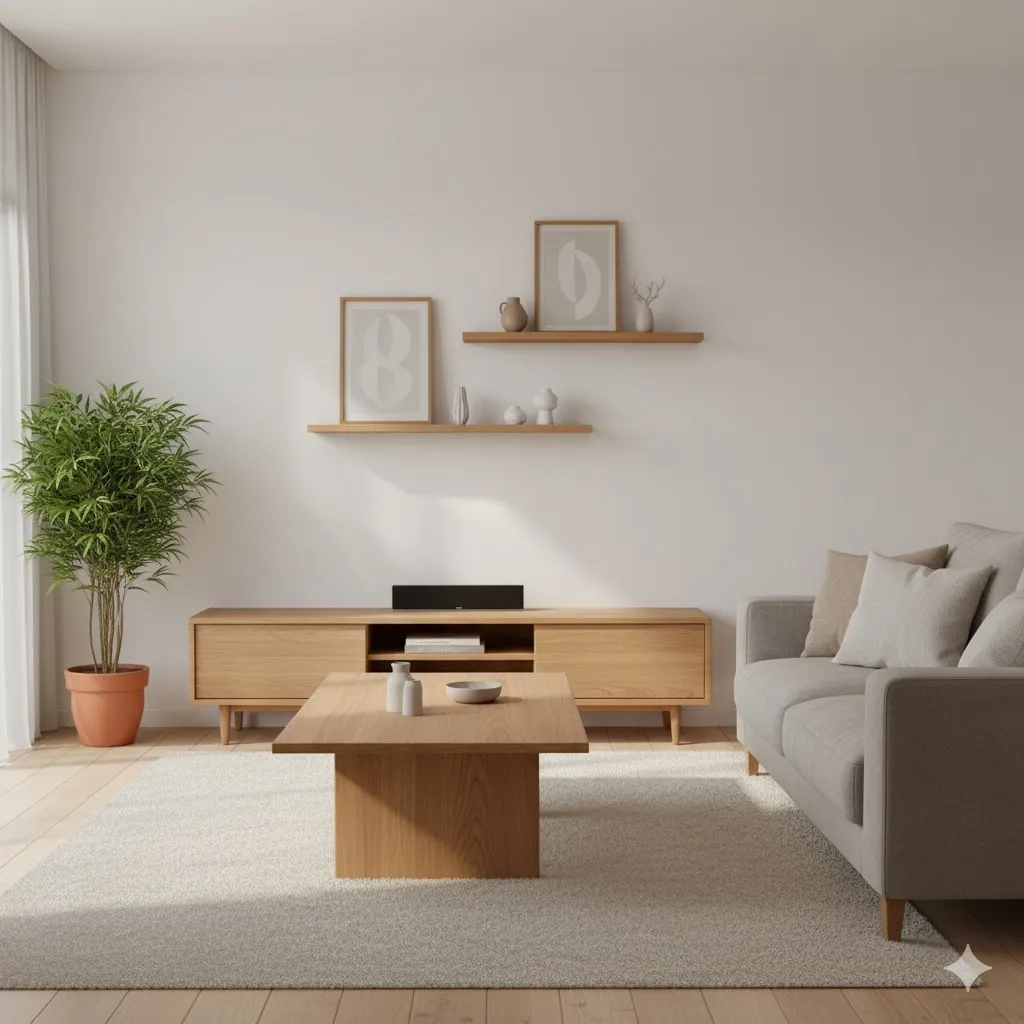
Idea 6 – Keep Clutter Away With Smart Storage
A bright and calm living room is hard to achieve if clutter is everywhere. Scandinavian style solves this with smart, simple storage. Think about closed cabinets, storage benches, baskets, and shelves that help you hide or organize things. Choose storage furniture that blends in with your walls or other pieces, so it doesn’t draw too much attention. Baskets made of natural materials like seagrass or rattan are great for storing blankets, toys, or magazines while still looking stylish. Open shelves can work too, but try to keep them tidy and not overstuffed. When everything has a place, it’s easier to keep your living room clean and peaceful. A space with less visual noise gives your mind a break.
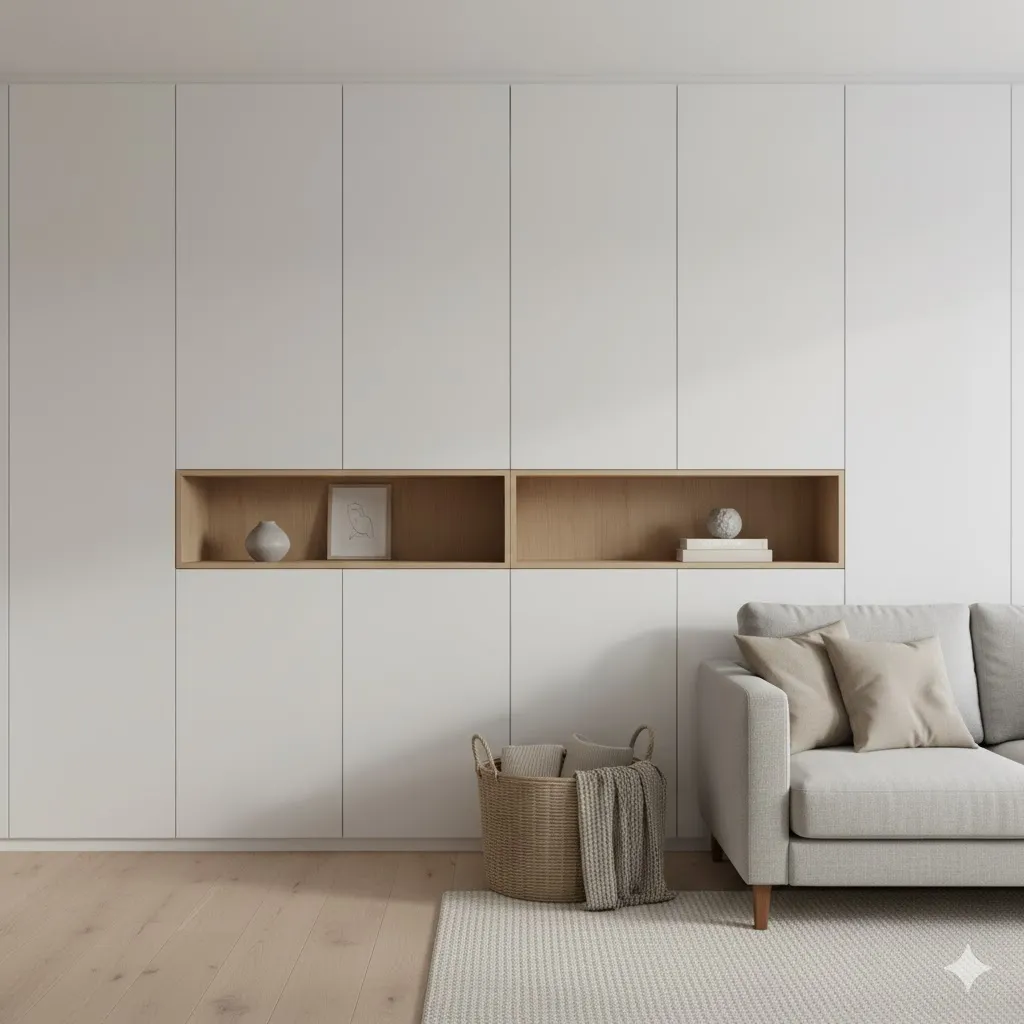
Idea 7 – Use Green Plants to Bring Life Inside
Plants are almost a must-have in a Scandinavian living room. They bring a soft touch of color and a sense of life into a calm, neutral space. You don’t need rare or complicated plants; simple choices like a rubber plant, snake plant, monstera, or even small herbs can work well. Place plants in corners, on side tables, or on window sills. Use simple, neutral pots in white, grey, or clay so the focus stays on the greenery. If you don’t have a lot of light or are not great at plant care, you can choose low-maintenance plants or even a few high-quality faux ones.

Idea 8 – Add a Statement Coffee Table
A coffee table sits at the center of your living room, so it’s a good place to show a bit of style. In Scandinavian design, a coffee table is usually simple but interesting. It might be made of wood, have a round shape, or be a pair of nesting tables. A round table can soften a room that has a lot of straight lines, while a rectangular one works well with a long sofa. Choose a table with clean lines and a light or natural finish. On top, keep decor minimal: maybe a tray, a candle, a book, and a small plant. The table should feel useful first and beautiful second.

Idea 9 – Create a Calm Gallery Wall With Simple Art
Art is one of the best ways to add personality to a Scandinavian living room without making it feel busy. A gallery wall with simple, calm prints can look stylish and relaxed at the same time. Choose art with soft colors, line drawings, nature themes, or abstract shapes in neutral tones. Stick to a limited color palette so the wall still feels calm. Use thin, simple frames in black, white, or light wood. Arrange the frames with even spacing, and don’t be afraid of white space around them. Your gallery wall doesn’t have to be huge; even a small cluster above the sofa can make a big difference.

Idea 10 – Mix Soft Lighting: Floor Lamps, Table Lamps, and Candles
Scandinavian living rooms rarely rely on just one ceiling light. Instead, they use several light sources at different heights to create a warm and cozy atmosphere. You can mix a ceiling light with a floor lamp beside the sofa, a table lamp on a side table, and even wall lights if you like. Choose lamps with simple shapes and warm white bulbs to avoid harsh light. Candles are also a big part of Scandinavian hygge; placing a few candles on the coffee table, windowsill, or shelf creates a soft, flickering glow in the evenings. When you layer different lights, you can easily change the mood—from bright and active during the day to soft and relaxing at night.
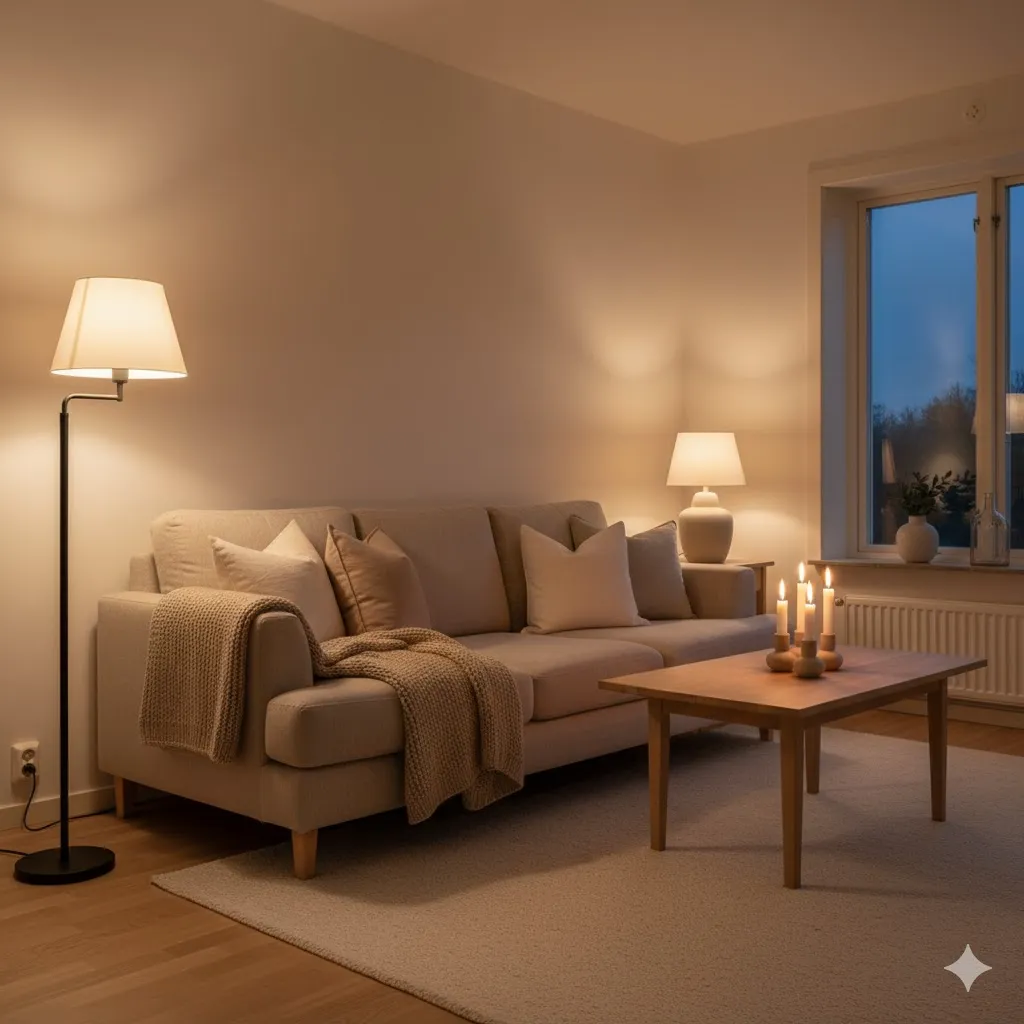
Idea 11 – Use Natural Materials Like Linen, Cotton, and Wool
Natural materials help your living room feel grounded and gentle. Scandinavian style often uses fabrics like linen, cotton, and wool because they feel good, age well, and look natural. Linen curtains in a light color move softly with the air and let in light. Cotton cushion covers are easy to wash and change with the seasons. Wool rugs and throws add warmth and a slightly rustic feel. Try to avoid too many shiny, synthetic fabrics, as they can make the space feel less calm. When most of the materials in your living room come from nature, the whole room feels softer, warmer, and more inviting.

Idea 12 – Add a Touch of Black for Contrast
Even in a light and bright Scandinavian living room, a small touch of black can be very powerful. Black acts like eyeliner for your room—it defines shapes and adds focus. You can bring in black through things like lamp bases, picture frames, chair legs, or a simple metal side table. The key is not to overdo it; just a few black elements are enough to create contrast and stop the room from looking too pale or flat. Black works especially well with white, grey, and natural wood. It also helps modernize the space, giving it a slightly sharper, more stylish edge while keeping the calm mood.
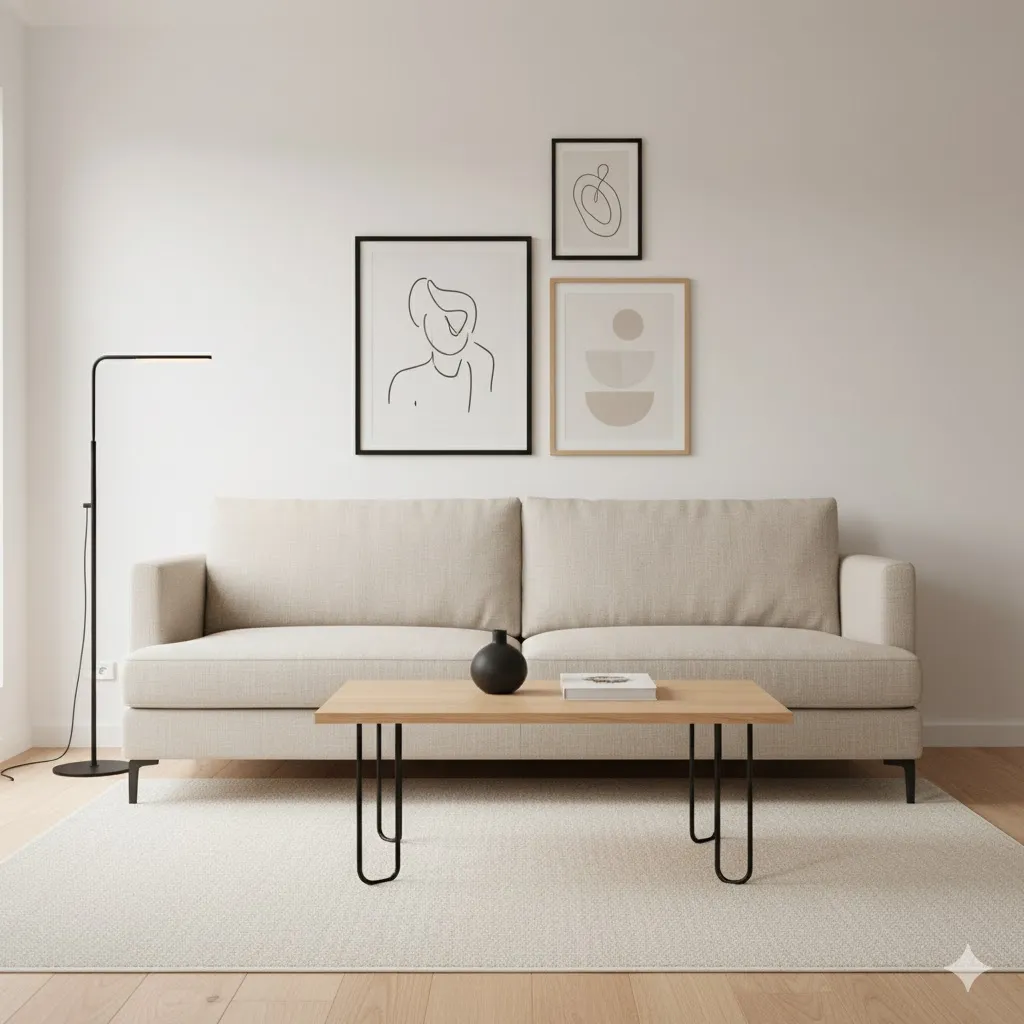
Idea 13 – Create a Cozy Reading Corner
A Scandinavian living room is not complete without at least one spot where you can curl up comfortably with a book or a hot drink. To create a cozy reading corner, all you really need is a comfortable chair, a small side table, and a good light. Place the chair near a window if possible, so you can enjoy natural light during the day. Add a soft throw blanket and a cushion for extra comfort. A floor lamp or wall lamp beside the chair makes it perfect for evening reading. This little corner can become your personal safe space, a place to slow down and enjoy quiet moments—exactly what Scandinavian living is all about.
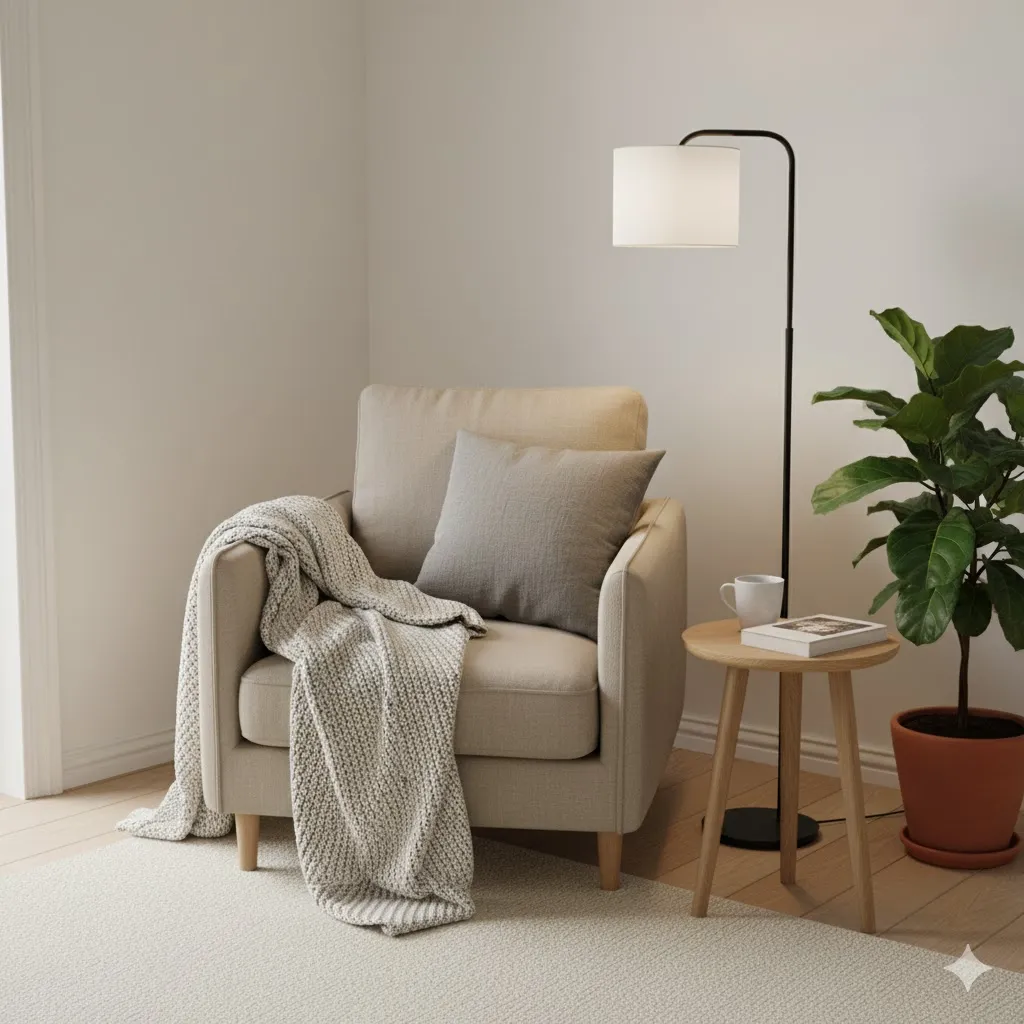
Idea 14 – Keep Decor Minimal but Meaningful
Scandinavian style is known for being minimal, but that doesn’t mean empty. It means choosing fewer items, but making sure each one has a purpose or brings you joy. Instead of many small decorations, pick a few that really mean something: a favorite vase, a handmade bowl, a family photo, or a special candle holder. Leave some surfaces clear so the room can “breathe.” This makes it easier to clean and easier to enjoy. When your decor is minimal and meaningful, your living room feels calm and personal instead of crowded. You also appreciate each object more, because it isn’t lost in a sea of stuff.
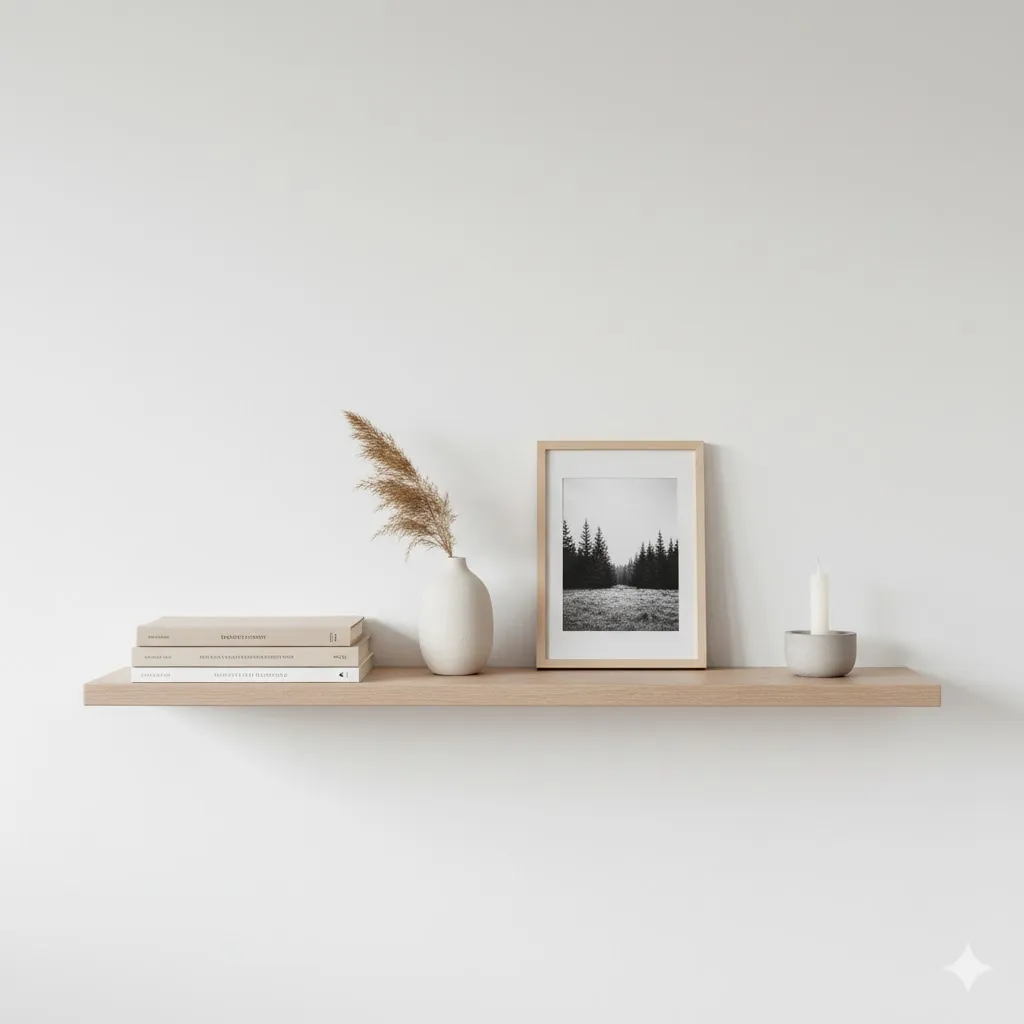
Idea 15 – Add Hygge Details for Extra Comfort
“Hygge” is a Danish word that roughly means cozy comfort and a feeling of contentment. It’s a big part of Scandinavian living. In your living room, hygge can come from small details: soft blankets, warm socks, your favorite mug, a candle burning on the table, or soft music in the background. You can keep a basket of throws nearby so anyone can grab one. Use candles (real or LED) in the evenings to create a warm glow. Make sure there are spots where people can tuck their feet up and relax, not just sit stiffly. Hygge is not about how the room looks in photos; it’s about how it feels when you sit there.
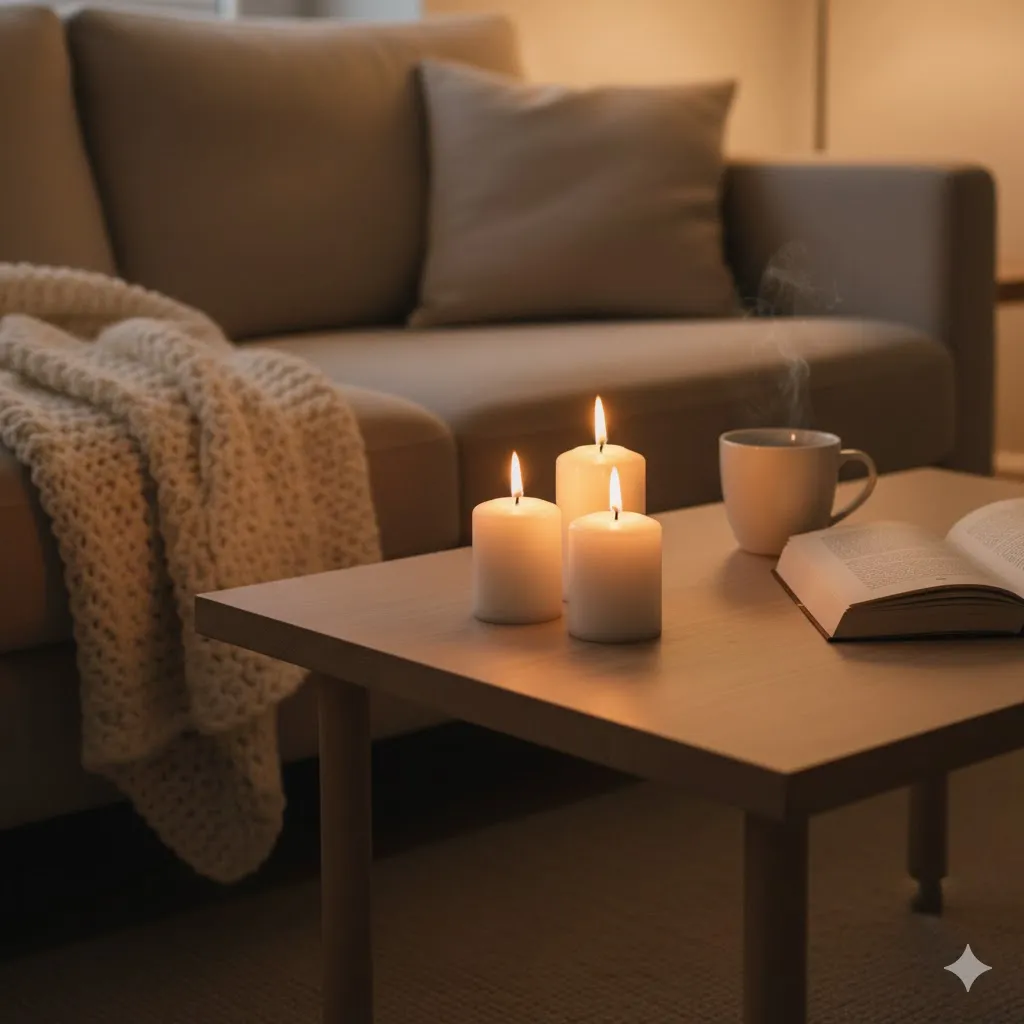
Small Scandinavian Decor Mistakes to Avoid
Even with the best ideas, it’s easy to make a few mistakes when trying to create a Scandinavian living room. One common mistake is going too cold and clinical—too much white, not enough texture or warmth, and the room feels empty instead of calm. Another is mixing too many bright colors or busy patterns, which breaks the peaceful mood. Over-cluttering shelves and tables is also a problem; remember, less is more. Try not to buy everything at once just because it “fits the style.” Instead, build your room slowly, piece by piece, choosing things you truly like and that work with your life. When you avoid these small mistakes, your living room will feel more authentic and lasting.

Conclusion: Build a Scandinavian Living Room That Feels Like Home
A Scandinavian living room is not about strict rules or one perfect look. It’s about creating a bright, calm, and cozy space where you actually enjoy spending time. By using soft neutrals, natural light, simple furniture, and warm textures, you can turn almost any room into a peaceful retreat. Add wood, plants, good lighting, and a few personal decor pieces, and your space will feel both stylish and welcoming. The 15 ideas in this guide are not steps you must follow exactly, but tools you can mix and match to suit your home. Start small—maybe with a new rug, lighter curtains, or a decluttered shelf—and build your Scandinavian living room slowly.
FAQs About Scandinavian Living Room Ideas
1. Can I create a Scandinavian living room in a small space?
Yes, Scandinavian style is actually perfect for small spaces. The light colors, simple furniture, and focus on natural light help a small room feel bigger and less crowded. Choose a compact sofa with slim legs, avoid big bulky furniture, and keep your color palette soft and neutral. Use mirrors to reflect light and choose smart storage to hide clutter. Even in a studio or tiny apartment, a few Scandinavian ideas can make a big difference in how open and calm your living room feels.
2. Do I need all-white walls for a Scandinavian look?
No, you don’t have to use pure white if you don’t like it. Off-white, light grey, or very soft beige also work well and may even feel warmer. The main goal is to keep the walls light so they bounce light around and act as a calm background. If you love color, you can add it through art, cushions, or one soft accent wall. It’s better to pick a shade you truly enjoy than to force a bright white that feels too harsh in your space.
3. What kind of sofa works best in a Scandinavian living room?
A simple, comfortable sofa with clean lines and a neutral color is ideal. Look for light grey, beige, or cream fabrics and avoid heavy, oversized shapes. Sofas with wooden or thin metal legs fit the style well, because they look lighter and allow the floor to show. You can always make the sofa feel cozier with throws and cushions. The main point is that the sofa should be practical for your daily life and not dominate the whole room visually.
4. Can I use bold colors in a Scandinavian living room?
You can, but it’s best to use them in small doses. Scandinavian style usually keeps big surfaces like walls and main furniture in light, neutral tones. Bold colors work well in art, cushions, blankets, or a single piece of furniture, like a small chair. This way, the color adds energy without breaking the calm feeling. If you want a stronger look, you can choose one rich accent color, such as deep blue or forest green, and repeat it a few times around the room.
5. How can I make my living room feel more “hygge”?
To add hygge, think about comfort and simple pleasures. Use soft blankets, warm cushions, gentle lighting, and candles. Create a cozy reading corner with a comfy chair and a lamp. Keep a tray with your favorite mug, a book, and maybe a small plant. Play soft music or enjoy quiet moments with family or friends. Hygge is less about buying specific items and more about how your space makes you feel—safe, warm, and relaxed. If your living room invites you to slow down and enjoy the moment, you’re on the right track.





